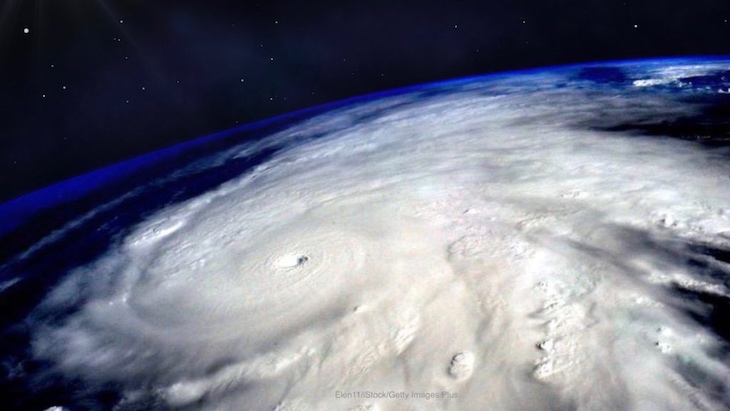The FDA is offering food safety tips for the hurricane season, including what to do about power outages and flooding. There are lots of things to think about and do, including safeguarding medications, water, and pets.

Everyone, not just people in hurricane-prone areas, should maintain a waterproof emergency kit that is stocked with non perishable food, extra medication, and hygiene supplies. Non perishable food includes shelf stable items including canned food such as tuna, vegetables, fruits, and soups, bread, peanut butter, granola bars, crackers, nuts, trail mixes, mayonnaise, mustard, dried milk, and jams and jellies. Be sure to include a can opener.
Food, water, and medical supplies will be hard to find both before and after a storm. Make sure that you have enough of your prescriptions on hand. And bottled water is a must. Keep a copy of prescriptions, and put medication bottles in water tight containers. You should keep 1 gallon of water per person per day; enough for at least three days.
Don’t forget your pets. Their supplies, including leashes, medicines, vaccination records, and food, should be kept in a water tight container. Keep at least a one week’s supply of water for your pet or pets. Add some toys and treats to your pet safety kit for reassurance. And keep a picture of you and your pet together, so if you do become separated, it will document ownership.
Power Outages
During power outages, food in an unopened refrigerator and freezer is safe to eat if the power outage lasts less than four hours. Do not try to sniff or taste the food to see if it is safe to eat.
If you can, after four hours pack perishable refrigerated food into a cooler surrounded by ice or frozen gel packs. Always check the temperature of these items before cooking or eating. If it is above 40°F and has been for more than two hours, throw it away.
Food will stay safe in an unopened freezer for 48 hours if it is full, or 24 hours if the freezer is half full. Before the storm, load your freezer with bags of ice if it is not full. This ice can also serve as drinking water as long as it is kept away from flood water.
After the Hurricane
After the storm, do not eat any food that isn’t in a waterproof container if there is any chance it came into contact with flood water. Flood water is filthy and could contain chemicals, pathogenic bacteria, and toxins. Inspect canned foods and discard any in damaged cans that are swollen, or with leaks, punctures, holes, or rust.
Do not eat any food packaged in plastic, paper, cardboard, or cloth containers that have been in contact with water. Discard food and beverages with screw caps that have been in contact with flood water, even if they haven’t been opened, along with containers that have snap lids, crimped lids (soda bottles), twist taps, flip tops, and home canned food. These containers can’t be disinfected.
Discard any perishable food that has been at room temperature for more than two hours, or one hour if the ambient air temperature is above 90°F. Do not taste food to see if it’s safe. You cannot taste pathogens, and they do not affect the flavor, texture, appearance, or aroma of food.
Thoroughly wash all pots, pans, ceramic dishes, and utensils, including can openers, with soap and water after they have been in contact with flood water. Rinse and then sanitize them by boiling in clean water or immersing them for 15 minutes in a solution of one tablespoon unscented liquid chlorine bleach for every gallon of water. Also thoroughly wash countertops with soap and water. Sanitize countertops using the same bleach solution, then air dry.
Stay safe during this hurricane season with these safety tips.




